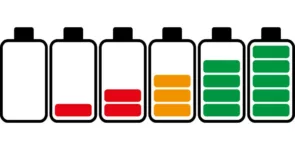The Qualcomm Snapdragon X Elite has been a big hit with impressive power (12-cores), long battery life, and Microsoft certification for CoPilot+. That part just launched back in June, and it was just followed by what should be a far more affordable sibling, the Snapdragon X Plus 8-core. Eight cores have been found to be plentiful for most people and with money tight, a lower-cost alternative on lower-cost laptops should allow laptops equipped with this new part to be even more attractive than the first wave.
In addition, while the first Snapdragon X Elite laptops seemed annoyingly generic, these coming laptops will fall into far higher volume segments. Hopefully, this will cause the OEMs to get more creative on designs allowing the resulting products to better target differentiated segments like education, road warriors and women, so anticipate far more differences between vendors and lines with this product.
This should also make Snapdragon X to be more common, which will allow developers to better address the uniqueness of a product in the WinTel space, pushing more code that is written for this processor and less that will be run through emulation.
The one laptop I’m hoping gets this part is the HP Folio. It was at one time my favorite laptop of all time, but the third generation moved off of Snapdragon and the battery life plummeted as a result, pushing me to another product.
What it’s Like to Live with a Multi-Day Laptop
When I used the old HP Folio, which was underpowered and not very compatible, its multi-day battery life made up for the shortcomings. I could go on day trips and leave my backpack at the office or at home and not worry about recharging. The battery life on that laptop was better than the battery life on my smartphone and smartwatch, and in a pinch, it could slow charge on my smartphone charger which was better for the laptop battery anyway.
But not having to carry the charger or the backpack was really freeing, and the leather cover on the HP notebook meant that my sweaty hands could hold the laptop securely. I’d have enough battery life to watch movies on a long flight, and I could store my backpack in the overhead so I didn’t have to experience the fun of even less legroom with the damn thing under my feet.
For unique users like mechanics, rather than having a cord and charger hooked to the laptop which typically results in a trip hazard in a ship, they can just use the laptop all day and then put it back in a charging cradle at night to avoid what is often a dangerous situation with cords where they should never be. Car racing teams have a similar problem. Earlier laptops with hard drives tended to fail due to engine vibrations causing the heads to score the platters. Current laptops use SSD drives that don’t have this problem, and the long battery life means they can use them for an entire race reliably without needing to recharge them. Having a laptop power down during a car race means the loss of telematics and the inability to tell that there is an emerging dangerous problem that would require pitting the car, so a long battery life performant laptop would also be ideal for this.
Wrapping Up: Freedom!
I look forward to the day when, as I do with my smartphone, I can just drop the laptop on an inductive charger at night, then pick it up in the morning for a day of work. The Snapdragon X Elite Plus 8-Core part provides the battery life I need. I’m just waiting for one of the laptop makers to create one that can be charged wirelessly.
When that happens, I’ll be in laptop heaven. Until then I can still get pretty close with the Snapdragon X Elite, and the much more affordable Snapdragon X Plus 8-Core. (And I’m so hoping HP makes its Folio back into my favorite laptop again and puts a Snapdragon X back in it).








